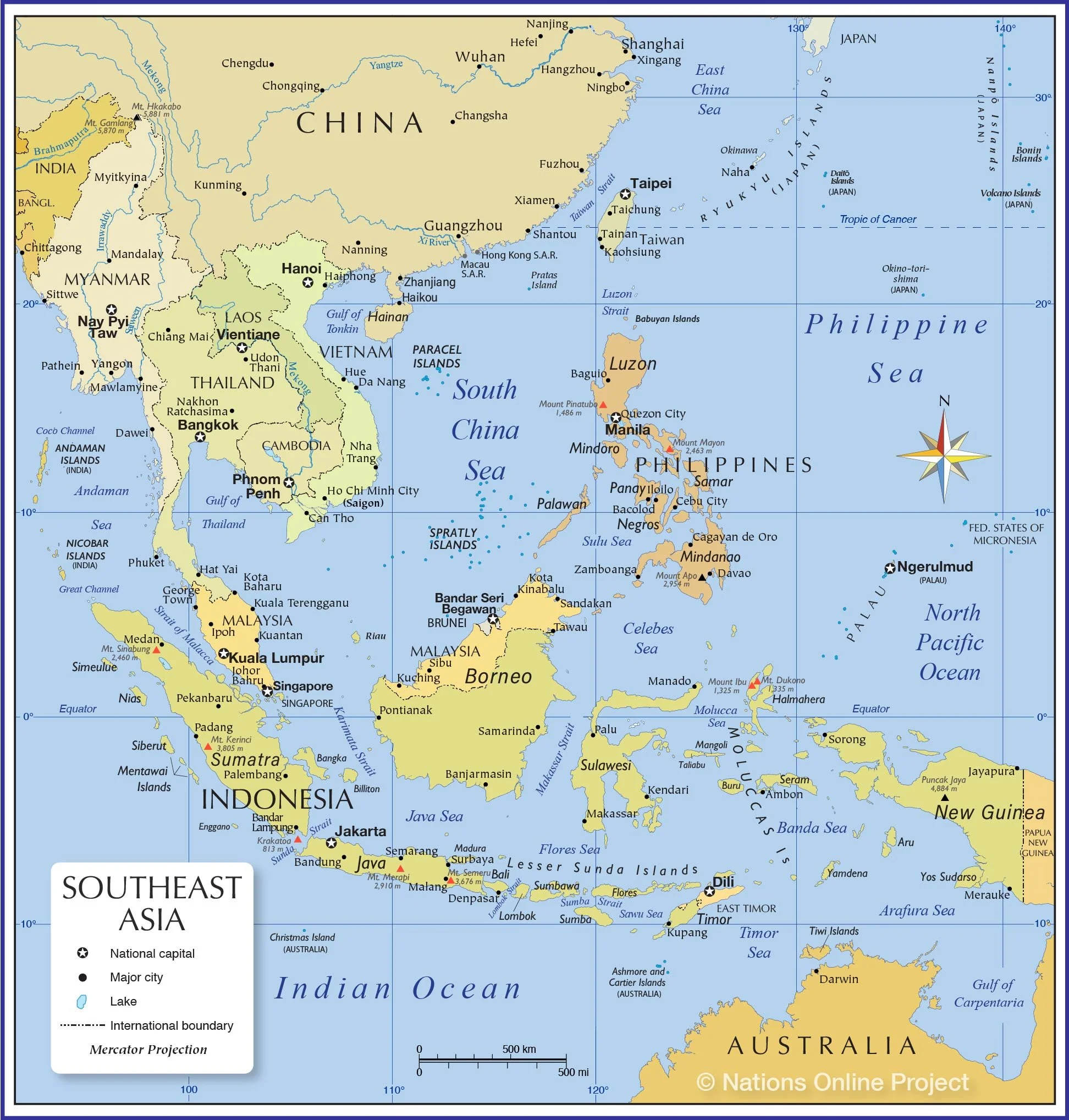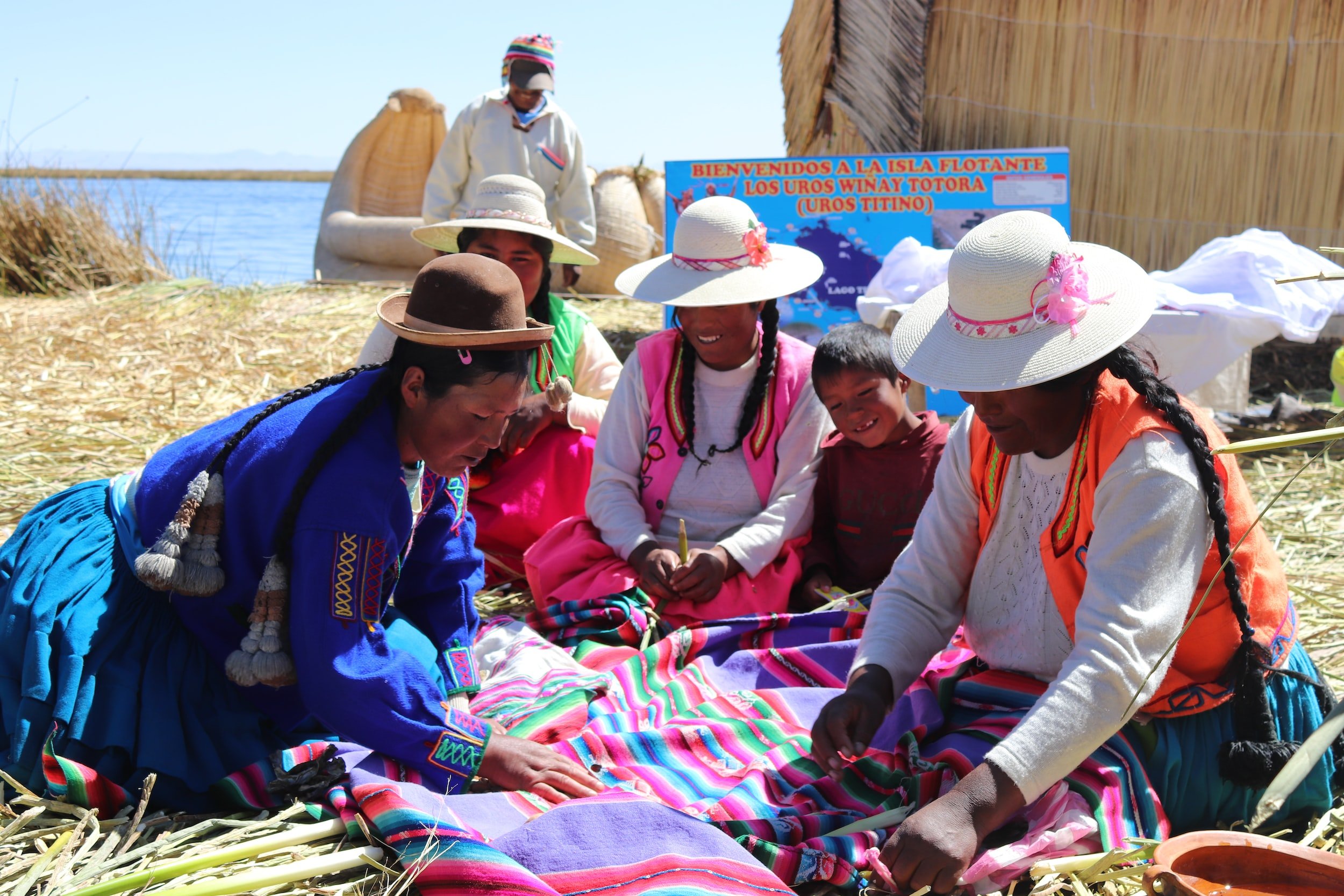Contributors Comment about Qualitative Research in an Asian Context
The SAGE Methodspace focus for September 2022 is on culture and research. Safary Wa-Mbaleka and Arceli Rosario, co-editors of The SAGE Handbook of Qualitative Research in the Asian Context are this month’s Mentors in Residence.
For this unique volume they brought together researchers from the Philippines, Singapore, Thailand, India, Oman, China, South Korea, Indonesia, Kazakhstan, Hong Kong, and from other continents such as North America, South America, Africa, Europe, and Oceania. This Handbook is of interest to Asian researchers, and for non-Asian researchers interested in conducting studies in Asia. Note that this new Handbook is available in the SAGE Knowledge database. Check your academic library to see if it is available. You can also purchase using this code for a 20% discount: MSPACEQ422, valid through 31 October, 2022.
To learn more about the motivations and experiences of chapter authors, we posed the same questions to each of them. Read their responses:
Carthy Joy Aguillon
Carthy Joy T. Aguillon Nicanor L. Guinto and Leo H. Aberion wrote “Chapter 16: Discourse Analysis.”
What is your area of study?
Gender in tourism
Why did you choose to write about the topic you selected for this chapter?
Because I want to highlight that spoken and written sounds, words and sentences are more than just communication tools. They are also tools that construct or deconstruct social realities.
What methodology or method(s) did you use?
Discourse Analysis
How did you adapt the methodology or method(s) to fit the Asian cultural context of your study?
By being intentional in making sure that the world views of specific Asian cultural groups, the ways they express their ideas, and the ways they make sense of their social realities frame methods of data gathering, analysis, and interpretation.
What lessons learned would you like to share with Methodspace readers?
Social realities vary from culture to culture. In Southeast Asia in particular, there are many cultural groups, and the ways these groups look at reality may be similar, but they certainly have differences. Thus the need to look into what is taken as norm.
Carthy Joy Aguillon is the chair of secondary education at Mountain View College, Valencia City, Bukidnon. Her research focus is on language and gender, as it applies to different Philippine contexts.
Dr. Gemini Asok
Dr. Asok co-wrote Chapter 23: Rigor in Qualitative Research in the Asian Context with Christian E. Ekoto, Pavel Zubkov.
What is your area of study?
My area of interest is in the behavioral dynamics of family, marriage, youth, LGBTQ+, and indigenous peoples issues, and their impact on conscious thoughts, motivation, social influences, and formation of habits.
Why did you choose to write about topics you selected for this chapter?
I co-authored a chapter on data collection in the Asian context. I chose to write about it because I believe that it is important that researchers consider the cultural context of their research setting. They must know the participants and how they can get rich, relevant, and truthful data. Building excellent interpersonal relationships play a big part in data collection in Asia. To note, gatekeepers must be chosen who have the interest, economic, political influence, or who belong to the "inner group." The Western concept of data collection may not align with the Asian ethical process of negotiating. What makes data collection excellent from an Asian perspective is a strong relationship with the gatekeepers.
What methodology did you use?
I have been attuned to phenomenology as both a personal philosophy and an approach that will find truth in human experiences and meanings. I find it amazing how meanings ascribed by people provide us with profound understanding of their perceptions, thoughts, memories, emotions, desires, overall personal drama, and even their bodily awareness, unconscious actions, and linguistic activities. From careful unbiased observation, and accepting neither the subject's rigid appearance of reality nor their narrow view of their phenomena, concrete, open-minded insights are gained.
How did you adapt the method to fit the Asian context for your study?
A lot of times researchers would lump the research approach as distinctly universal. However, the Asian sentiments, the context of the "Asian we," as opposed to the Western "I," the respect of a second or third party negotiations in securing approval to study the subject and the surroundings, the respect for filial piety, elders, age, authority, the strong sense of hierarchy, and the regard for rituals and conventions have enhanced and enriched my research studies.
What lesson learned would you like to share with MethodSpace readers?
Studying, observing, respecting, applying, and crossing the threshold from the accepted universal approach to an Asian phenomenological approach will compensate future studies by non-Asian researchers while giving and respecting Asian subjects 'voice.' This can then inform a non-Asian researcher to design more stage-appropriate interventions that support Asian lived experiences.
Gemini Asok, PhD in Educational Psychology is a retired faculty member from Mountain View College, Valencia City, Bukidnon, the Philippines.
Dr. Nadine Collins
Nadine Collins, Chona Ramos, and Maureen Marinas wrote Chapter 9: “Phenomenology in the Asian Context”
What is your area of study?
I hold a Ph.D. in Education with an emphasis on Administration in Higher Education, a Master's degree in Educational Psychology, and an undergrad degree in Behavioral Sciences with an emphasis in Psychology.
Why did you choose to write about the topic you selected for this chapter?
I choose to write about that topic because I love qualitative research and Phenomenology. As such, I was comfortable writing on this topic because of my experience in using it before.
What methodology or method(s) did you use?
I used Phenomenology. It was the same method I used while working on my doctoral dissertation, and I have grown to love the method because of the richness of the data collection method (as with other methods in Qualitative Research), but more so because I get to understand phenomena and life experiences from those who have experienced it.
How did you adapt the methodology or method(s) to fit the Asian cultural context of your study?
To fit the Asian context, we considered certain cultural beliefs, nuances, and practices within that society even though the concepts were built on the general premise of phenomenology.
What lessons learned would you like to share with Methodspace readers?
The first lesson I would love to share is that you should conduct research that is aligned with you. Meaning the research approach and methodology that comes naturally to you. For example, quantitative research may be a good fit if you naturally think of numbers or get excited by them. Qualitative may be a better fit for you if you think words, poetry, stories, and get excited by conversations, etc..
Many struggle with research because they are trying to go through a process they are uncomfortable with. So, choose something you enjoy doing, it will not feel like work because you love it.
Another is that you should learn as much as possible about the method you decide to use. Read literature about the method and, read through studies that used it so see how the authors and researchers demonstrate its use in all aspects.
Finally, be the master of what you are researching. If you want to stand out and be respected as a researcher on a particular topic, then focus on doing research in that area to be a credible source who is visibly contributing to that specific niche or area.
Dr. Collins works with women globally as a women's leadership expert and empowerment coach. In addition, Nadine contributes to the academic arena by serving as a guest faculty member at the Adventist International Institute of Advanced Studies. Her research focus is on women in top leadership positions.
Dr. Carmela Lacsa-Domocmat
Arceli Rosario, Kezia Rosario, and Carmela L. Domocmat wrote Chapter 12: Photovoice and Its Place in Asia.
What is your area of study?
Health, adolescence, and the elderly are my research interests.
Why did you write about the topic you selected for this chapter?
I believe words are inadequate to paint the depth of people’s experiences; hence, using (metaphors in) pictures enhances the understanding of the phenomenon explored. What methodology or method(s) did you use? Photovoice.
How did you adapt the methodology or method(s) to fit the Asian cultural context of your study?
Adapting photovoice in the Asian cultural context was not difficult. Asians are fond of pictures. And they are naturally artistic and creative. So, understanding the framework and properly explaining it to the participants are the ways photovoice could explore and have an in-depth understanding of the phenomenon of interest. Further, some Asians are not usually verbally expressive of their conditions; hence, through photovoice, they can inform policymakers of such experiences, which may result in policy changes toward improving quality of life.
What lessons learned would you like to share with Methodspace readers?
Above pictures and creativity, photovoice primarily aims to empower marginalized groups. Researchers who believe they can be catalysts of change can employ this research design.
Carmela Lacsa-Domocmat is a professor at Manila Adventist College, the Philippines, where she also heads the Center for Assessment and Research.
Gianina Estera Petre, PhD
Dr. Petre wrote Chapter 6 : Action Research in the Asian Context.
What is your area of study?
My area of study is Education, with Curriculum and Instruction as an emphasis. Currently, I am an Assistant professor at Adventus University, Romania.
Why did you choose to write about the topic you selected for this chapter?
I used in my Ph.D. dissertation action research as a research design in a mixed intra-paradigm research design of case study, action research, and photovoice. Therefore, I have expertise in action research. I also consider action research as a research design suitable when aiming to improve a situation, which was my case - developing a model to implement cooperative learning in the initial teacher training program.
What methodology or method(s) did you use?
Qualitative methodology, with action research as a research design.
How did you adapt the methodology or method(s) to fit the Asian cultural context of your study?
During my Ph.D. studies in the Philippines, I learned to adjust to different cultures as it was a very diverse cultural environment. After finishing my Ph.D., due to the COVID-19 pandemic, I remained in the Philippines, and I started to teach different educational courses for MA and Ph.D. levels at the same international institution where I studied. Therefore, I was familiarized with teaching and conducting research in an Asian context with international students. I followed the qualitative research methodology features of taking care of my positionality (as I was the teacher and researcher), deciding on the interview time when appropriate for the participants, and mentioning in the informed consent the possibility of accepting or not participating without any consequences. All these mentioned aspects may be general in any qualitative research. However, in an Asian context, the researcher must be more sensitive and aware of the cultural aspects so that the study will be trustworthy.
What lessons learned would you like to share with Methodspace readers?
Qualitative research methodology and action research can be applied irrespective of the context when the researcher takes care of the cultural background of the participants. The researcher must follow the principles of qualitative methodology and each research design specificity.
Gianina Estera Petre, PhD is an Assistant Professor, Education Department at the Adventus University of Cernica, Romania.
Dr. Kepha Pondi
Pavel Zubkov and Kepha Pondi wrote Chapter 26: “Proposed Model of Writing the Methodology Chapter of a Qualitative Research Thesis or Dissertation.”
What is your area of study?
My area of study is finance with a cognate in research.
Why did you choose to write about the topic you selected for this chapter?
The reason why I chose to write on the methodology chapter is that I have been advising several students in writing their theses and dissertations, especially in the methodology. In the process of student advising, I realized that many of them had many challenges in writing the methodology chapter. As a result, they needed something to guide them in the process. It was a great opportunity to make a contribution to a resource that would guide those who engage in research.
What methodology or method(s) did you use?
In writing the methodology chapter, I did a literature review focusing on qualitative research methods. In addition, I brought in some well-written sections of on the methodology as an example to demonstrate how each section could be written in a thesis or dissertation.
How did you adapt the methodology or method(s) to fit the Asian cultural context of your study? This chapter was written with examples of research studies conducted in Asia by Asians. Thus, the chapter explicitly elaborates on the Asian context.
What lessons learned would you like to share with Methodspace readers?
One of the lessons I learned in writing this chapter is the importance of situating the research within the cultural context. In addition, using practical examples or illustrations amplifies understanding of the research methodology and terminology that would otherwise be confusing. This chapter, therefore, provides qualitative researchers with a simplified framework for writing the methodology chapter.
Dr. Pond is the research director of the Adventist International Institute of Advanced Studies, Silang, Cavite, Philippines. In addition, he is also the Director of the Asian Pacific Research Center and Chair of the Ethics Review Board.
Dr. Darrin Thomas
Dr. Thomas and Dr. Safary Wa-Mbaleka wrote Chapter 32: “Qualitative Research in a Multilingual Setting: Principles and Strategies.”
What is your area of study?
My interest in qualitative research arouse from a need to better understand the various phenomenon I study as a researcher. My focus as a researcher has always been within the field of education in Southeast Asia and understanding how students in this part of the world learn. Quantitative research is highly valuable but it is not able to provide the richness of distinct data that a qualitative approach is able to provide. Naturally, there is a place for both approaches and the context should help to determine which is appropriate.
Why did you choose to write about the topic you selected for this chapter?
The primary methodology that I use is phenomenology. I always desire to better understand the experiences of others. From this perspective it allows me to find patterns in these lived experiences of other individuals.
How did you adapt the methodology or method(s) to fit the Asian cultural context of your study?
It wasn't necessary to adjust the qualitative methodology I use too much for the Asian context. People here like to share stories and experiences so this has allowed me to learn a great deal through simply asking questions about people’s lived experience.
What lessons learned would you like to share with Methodspace readers?
In terms of lessons, I think patience is an important characteristic for any researcher. People love to rush to conclusions on scant evidence. A mature researcher is willing to wait and allow the data to reveal what is in important with time.
Dr. Thomas is an assistant professor of Educational Research in the faculties of Art and Humanities and Education at Asia-Pacific International University, in Thailand. His research interests includes TESOL, e-learning, and natural language processing involving primarily religious text.
Safary Wa-Mbaleka and Arceli Rosario
Safary Wa-Mbaleka and Arceli Rosario discuss their ideas and observations in this video interview.


















SAGE MethodSpace partnered with Prepared to Zoom into the meeting and hear selected delegates provide statements on the difficulties of research during global crises and suggestions on how stakeholders can work together better in the future. View the recording!